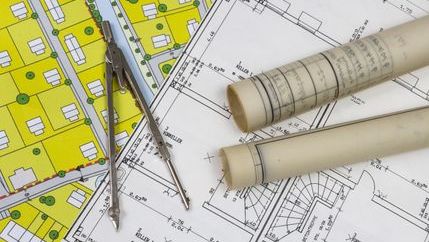
The draft framework’s focus on combining housing and nature aligns with Propertymark’s advocacy for sustainable, liveable communities. However, these principles must be applied pragmatically to ensure they support housing delivery where it is needed most.
Underestimating land needs for housing and infrastructure
The Department for Environment, Food and Rural Affairs’ (DEFRA) analysis suggests that by 2050, 1.1% of agricultural land (150,000 hectares) will be needed for housing and infrastructure, although the framework does acknowledge the need for multifunctional landscapes — where development, energy generation, nature, and food production can coexist
We are deeply concerned that this estimate fails to capture the true scale of the space needed to support housing developments. Energy provision (such as solar and wind farms), roads, schools, hospitals, and utilities all demand land. Meeting the UK Government’s housebuilding target demands sufficient land for not only homes but also the essential services to allow communities to thrive.
Historical trends suggest a much higher annual land conversion rate than is predicted in the consultation, and there should be a realistic assessment of land requirements to ensure housing and infrastructure delivery isn’t hampered by overly optimistic assumptions.
Clarity and co-operation are necessary
The consultation highlights principles for land use, including making decisions based on the strengths of the land, for example, prioritising uses where suitable land is scarcer or protecting places most suited to food production, and integrating spatial planning across sectors. However, we have flagged the risk that, without concrete implementation strategies, these principles are simply idealistic.
We have recommended stronger cross-departmental coordination to bring together DEFRA, the Ministry for Housing, Communities and Local Government (MHCLG), local planning authorities, private developers, and environmental groups. A working group on land use change, incorporating diverse voices, would help to foster this joined-up thinking, ensuring that planning reforms and environmental goals align.
Digitising land and property information
To support informed decision-making, we advocate the creation of a digital logbook system to centralise data on land use, planning permissions, environmental impacts, and infrastructure, making it easily accessible to agents, developers, planners, and buyers.
By linking UK Government spatial data, Land Registry records, and local authority planning data through Unique Property Reference Numbers (UPRNs), these digital logbooks would provide transparency and help streamline transactions. For rural properties and land, such records could include details like soil classification, energy efficiency improvements, and access routes — critical information for our members.
Recommendations for housing and development
The UK Government must continue to prioritise brownfield redevelopment to reduce pressure on greenfield and agricultural land and ensure local planning authorities integrate spatial strategies with climate objectives, recognising that housing, transport, and biodiversity must be planned together.
It will also be important to engage private developers in applying land use principles, as they remain the primary builders of new homes in the UK.
Representing members
We will continue to push for policies that support sustainable development while safeguarding the housing market’s growth. We encourage members to engage with these proposals and share views, case studies, and concerns with our Policy Team at [email protected]







